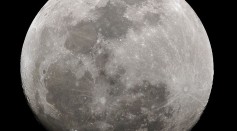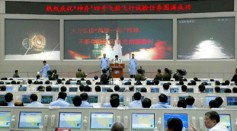China
New GPS Study Reveals Giant Pandas Hang in Packs in the Wild
China Seeks Cleaner Air Without an Environmental Movement
China's Lunar Rover Reveals Moon's Complex Geological History
Self-Mummified Monk Found in 1000-Year-Old Buddha Statue

China’s Space Program Reaches New Milestone on the Moon

How a Crop Found in Beer Helped Early Man Survive in Frigid Tibetan Plateau

China’s Supercomputer Tianhe-2 Reigns Supreme

China Space Probe Returns from Trip to the Moon—3rd Place in ‘Space Race’

China Space Probe Returns from Trip to the Moon—3rd Place in ‘Space Race’
Most Popular

Earth's Magnetic Field Nearly Collapsed 600 Million Years Ago, Sparking Evolution of More Complex Life

Pharaoh's Curse Unlocked? Scientists Claim To Have Cracked the Mystery of What Killed Over 20 People Who Opened the Tomb of King Tut in 1922

Why Do People Sigh? Here's What These Deep Breaths Do to the Body and What They Could Mean

Florida Dolphin Found To Have Highly Pathogenic Bird Flu in First Case in North America

!['Cosmic Glitch' in Einstein's Theory of General Relativity Could Be Explained in This New Scientific Tweak [Study]](https://1721181113.rsc.cdn77.org/data/thumbs/full/53435/258/146/50/40/cosmic-glitch-in-einsteins-theory-of-general-relativity-could-be-explained-in-this-new-scientific-tweak-study.jpeg)



